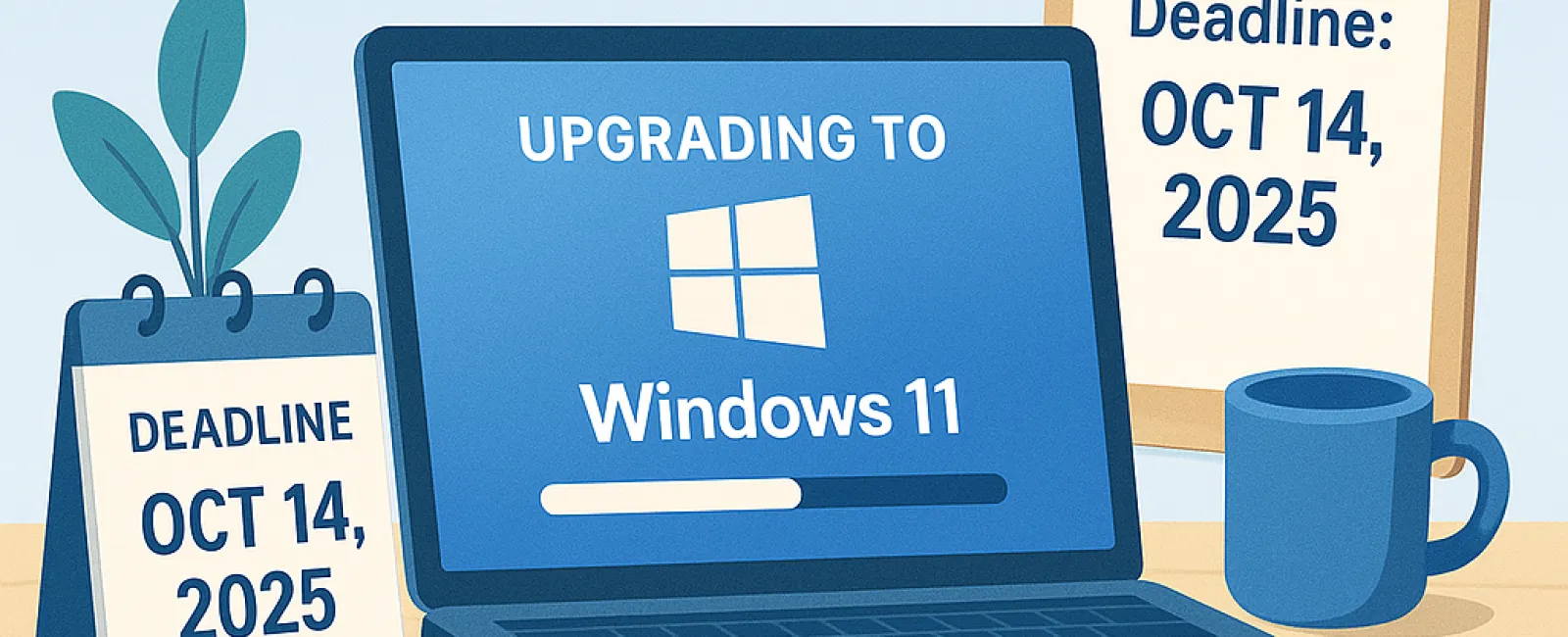June 23, 2025
If your business is still running Windows 10, the countdown has begun.
As of October 14, 2025, Microsoft will officially stop supporting Windows 10. This means no more security updates, bug fixes, or technical support.
What every business owner must realize is that delaying the upgrade isn’t just about future inconvenience.
The real cost lies in what you risk losing by waiting now.
Procrastination Is A Costly Business Choice
We understand—upgrading every computer can feel like a hefty expense. It’s tempting to put it off... until a critical failure happens.
Here’s what postponing the upgrade truly costs you:
1. Operating Without Protection
When Windows 10 support ends, any new security flaws become your responsibility.
Hackers target outdated systems because they’re easy prey—like locking your door but leaving windows wide open.
A single breach could cost thousands or even jeopardize your entire business.
2. Compatibility Problems With Software And Hardware
Many essential business applications—accounting software, CRMs, and specialized platforms—are already dropping Windows 10 support.
If your systems fail mid-project or crash during client presentations, how much could that cost?
And it’s not just software—
New printers, peripherals, and security tools may stop working with your outdated OS.
3. Declining Productivity
Older systems run slower, crash more often, and frustrate your team. Even minor delays add up, lowering efficiency, morale, and your competitive edge.
If each employee loses 10 to 15 minutes daily due to tech issues, what does that add up to monthly?
4. Emergency Upgrades Cost More
Waiting for a system failure triggers stress and forces you into panic spending:
● Urgent hardware purchases
● Expensive rush IT labor
● Disruptions while equipment is replaced
A bit of foresight now can save you a lot of hassle—and money—later.
5. Risking Regulatory Non-Compliance
If your business manages sensitive data or is regulated (HIPAA, PCI-DSS, etc.), running unsupported systems could lead to fines or lawsuits. Most regulations require current security standards—Windows 10 won’t qualify after October.
How Savvy Business Owners Are Preparing
They’re not just upgrading devices—they’re using this change as an opportunity to:
● Assess which devices need replacement
● Optimize software and tools
● Enhance cybersecurity measures
● Plan IT budgets strategically for 2025
Steps To Ensure A Seamless Upgrade
We recommend the following:
● Check device compatibility - Identify which machines can support Windows 11 and which need replacement.
●
Review your applications - Confirm your critical software is compatible with Windows 11 or newer platforms.
● Allocate budget for hardware now - Avoid supply chain delays later.
● Partner with an IT expert - We manage your upgrade from start to finish, ensuring zero downtime and no surprises.
Don’t Wait Until The Last Minute
Delaying the upgrade will cost you more in money, stress, and lost opportunities. We help small businesses upgrade smartly: with careful planning, smooth execution, and a focus on future growth.
Click here or call us at 714-579-3026 to schedule your FREE 15-Minute Discovery Call. We’ll help you determine what needs upgrading, what can stay, and create a transition plan that keeps your business running smoothly before the deadline.





